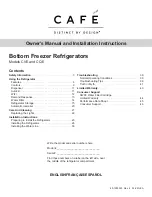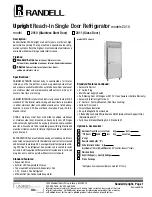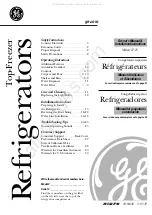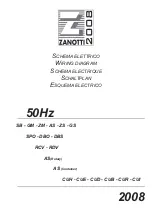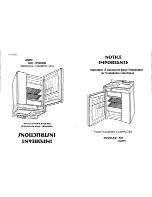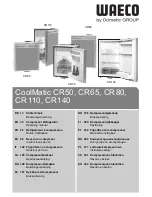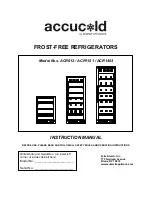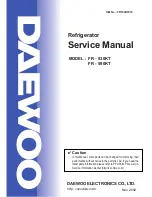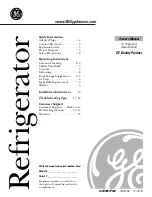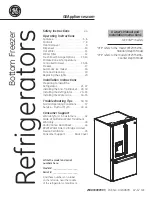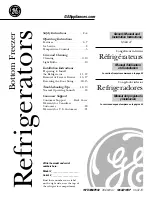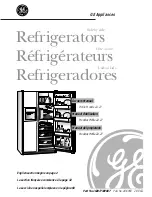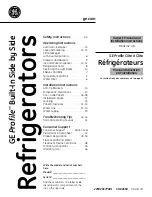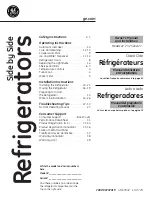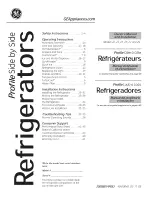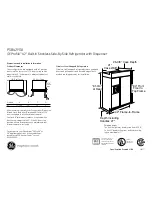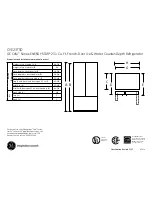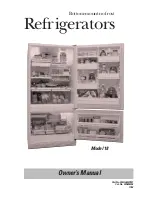
2
WARNINGS
General Safety
ª
This appliance is designed to be operated by
adults. Children should not be allowed to tamper
with the controls or play with the product.
ª
It is dangerous to alter the specifications or modify
this product in any way.
ª
Care must be taken to ensure that the appliance
does not stand on the electrical supply cable.
ª
Before defrosting, cleaning or maintenance work
is carried out, be sure to switch off the appliance
and unplug it.
ª
Do not remove items from the freezer if your
hands are damp/wet, as this could cause skin
abrasions or “frost/freezer burns”.
ª
Ice lollies can cause “frost/freezer burns” if
consumed straight from the freezer.
Service / Repair
ª
Any electrical work required to install this
appliance should be carried out by a qualified
electrician or competent person.
ª
This product should be serviced by an authorised
ZANUSSI Service Centre, and only genuine spare
parts should be used.
ª
Under no circumstances should you attempt to
repair the appliance yourself. Repairs carried out
by inexperienced persons may cause injury or
serious malfunctioning. Refer to your local
ZANUSSI Service Centre and always insist on
genuine spare parts.
Use
ª
ZANUSSI domestic refrigerators, freezers and
fridge/freezers are designed to be used specifically
for the storage of edible foodstuffs only.
ª
Frozen food must NOT be re-frozen once it has
thawed out.
ª
Do not place carbonated or fizzy drinks in the
freezer as it creates pressure on the container,
which may cause it to explode, resulting in
damage to the appliance.
ª
The cooling plate or refrigerated freezer shelves in
this appliance contain channels through which the
refrigerant passes. If these are punctured this
would cause substantial damage to the appliance
and result in food loss. DO NOT USE SHARP
INSTRUMENTS to scrape off frost or ice. Under
NO circumstances should solid ice be forced off
the lining or shelves. Solid ice should be allowed
to thaw, when defrosting the appliance. See
Defrost instructions.
ª
Manufacturers’ storage recommendations should
be strictly adhered to. Refer to relevant
instructions.
Installation
ª
There are working parts in this product which heat
up. Always ensure that there is adequate
ventilation as a failure to do this will result in
possible food loss. See installation instructions.
ª
Parts which heat up should not be exposed.
Wherever possible, the back of the appliance
should be close to a wall but leaving the required
distance for ventilation as stated in the installation
instructions.
ª
The appliance should be left for 2 hours after
installation before it is turned on in order to allow
the refrigerant to settle.
ª
This appliance is heavy. Care should be taken
when moving it.
IT IS MOST IMPORTANT THAT THIS INSTRUCTION BOOK SHOULD BE RETAINED WITH THE
APPLIANCE FOR FUTURE REFERENCE. SHOULD THE APPLIANCE BE SOLD OR
TRANSFERRED TO ANOTHER OWNER, OR SHOULD YOU MOVE HOUSE AND LEAVE THE
APPLIANCE, ALWAYS ENSURE THAT THE BOOK IS SUPPLIED WITH THE APPLIANCE IN
ORDER THAT THE NEW OWNER CAN GET TO KNOW THE FUNCTIONING OF THE APPLIANCE
AND THE RELEVANT WARNINGS.
THESE WARNINGS ARE PROVIDED IN THE INTEREST OF SAFETY. YOU MUST READ THEM
CAREFULLY BEFORE INSTALLING OR USING THE APPLIANCE.
GB


















